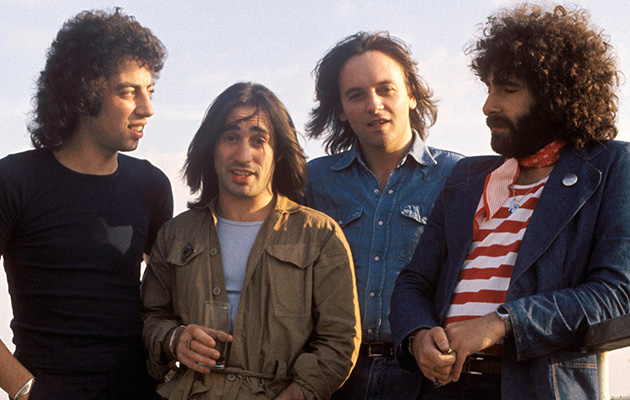How four Manchester studio obsessives created their very own sonic playground and in the process came up with the band’s first, somewhat controversial, No 1 hit… Words: Tom Pinnock ________________________________ When the owners of a Stockport hi-fi shop turfed out their upstairs tenants in 1...
GODLEY: We didn’t do demos. We’d just show up at the studio and sit around. We probably just played it on Lol’s Spanish guitar or something similar. And then we’d kind of rip it up and say, “Well, I like that bit, not sure about that bit, how does that bit go again?” I can’t remember whether it was a resounding thumbs-up all round. I seem to remember it was, in general, but naturally when you start recording something it changes shape a little bit along the way, because better ideas actually come out when it exists on tape… and that’s probably what happened here.
GOULDMAN: Kev and Lol were wonderful songwriters, but sometimes they could go on a bit. Or they had a habit of writing one part of a song, that would only occur once, that was actually a work of genius. I’d say, “You absolutely have to repeat that part!” We acted very well as editors for each other. In the case of “Rubber Bullets”, they said something like, “We need another part to it,” and I said, “I’ll do it.” So I wrote most of the middle section…“Sergeant Baker started talking with a bullhorn in his hand…” But the very end of that was Lol – I remember that – “God will come to set you free…”, and I said, “doodly doodly doodly doo”… the link back into the verse. I also wrote the couplet, “We’ve all got balls and brains, but some’s got balls and chains.” Very proud of that.
GODLEY: I think one thing that we brought to the band was the idea that the motion of the song doesn’t have to live in a linear place all the way through. It can jump around, it can change mood. It can go into a quiet room or a louder room or go up onto the roof, if you like, and change musical structure. I think we started the middle bit, but didn’t quite know where to take it. So I imagine Graham took it to where it needed to go, because again, like Lol, he had a very intense knowledge of how chords work and where they should go and how lyrics work.
STEWART: It was pretty similar to how it ended up when they first brought it in, though they hadn’t got any riffs sorted out. I was very interested in the Steely Dan drum sounds then, which were very close-mic’d.
GODLEY: Eric always managed to get a good sound out of the kit, but I found out quickly when they were mixing the kit and they soloed in on the hi-hat mic you could hear me mumbling gibberish while I played – very embarrassing. Eric had an extraordinary pair of ears that managed to capture the essence of everything we were doing in that particular space.
STEWART: I used to use Neumann U67 valve mics, which cost more than a bloody E-Type Jag, about 12 hundred quid apiece. Those sounded so good. We built an echo chamber in the stone-staircase going down to the basement. We put a speaker at the bottom and a microphone at the top, and it actually did work.
GODLEY: It probably only took a few days to record. There was no-one coming in to check on how we were doing. And there were no mobile phones ringing. So, it was like we were in there, virtually with the door locked just playing and overdubbing until it was done.
GOULDMAN: How we’d record at that point was always the same – me and Lol would play electric guitar and Kevin would play drums, and Eric would engineer in the control room.
STEWART: We were going on to an eight-track machine. That meant a lot of track-jumping to get on as many overdubs and vocals as we could, which is a bit of a risk to take because you couldn’t go backwards once you’d erased a track.



